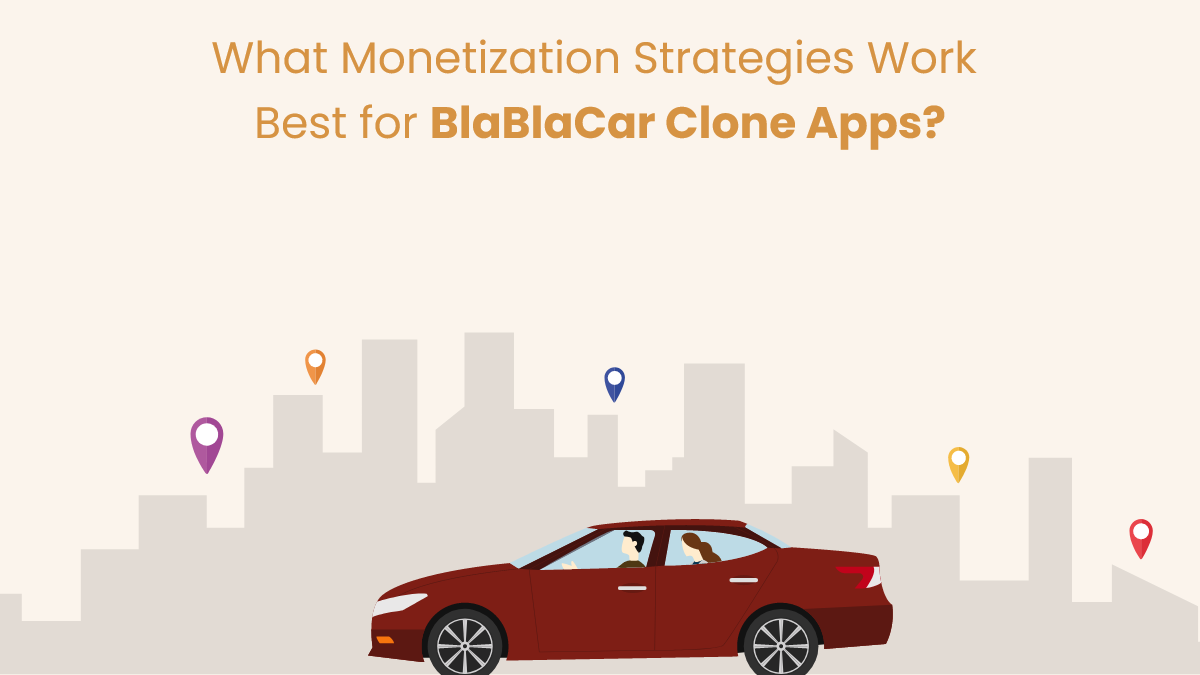What Monetization Strategies Work Best for BlaBlaCar Clone Apps?

Creating a successful BlaBlaCar clone app involves not only providing a reliable carpooling platform but also implementing effective monetization strategies. These strategies not only help in generating revenue but also sustain the app’s growth and development. Here’s a comprehensive guide on the monetization strategies that work best for BlaBlaCar clone apps.
1. Commission on Transactions
One of the primary monetization models for carpooling apps like BlaBlaCar involves charging a commission on each transaction facilitated through the platform. Typically, this commission is deducted from the driver's earnings for each ride completed. The percentage can vary depending on factors such as the region, distance, and frequency of rides. This model ensures that the app generates revenue directly proportional to the usage and success of the platform.
2. Premium Memberships
Offering premium memberships is another effective way to monetize a BlaBlaCar clone app. Users can opt for premium subscriptions that provide additional benefits such as priority access to rides, enhanced visibility in search results, and exclusive features like advanced booking options or access to higher-rated drivers. This tiered subscription model encourages users to upgrade for a better experience while generating recurring revenue for the app.
3. In-App Advertising
Integrating targeted advertising within the app can be a lucrative monetization strategy. Advertisers can place ads related to travel, automotive products, or local services, targeting users based on their location, travel preferences, or demographic information. Implementing native ads that blend seamlessly with the app's interface can enhance user engagement while providing a steady stream of revenue through pay-per-click or pay-per-impression models.
4. Freemium Features
Adopting a freemium model where basic app functionalities are offered for free while premium features are available for a fee can attract a wide user base initially. Users can access essential carpooling services without any charge, but they can opt to pay for additional features such as ad-free experience, detailed ride analytics, or customization options. This approach balances user acquisition with revenue generation from users willing to pay for enhanced capabilities.
5. Referral Programs
Implementing a referral program can effectively increase user acquisition and retention while generating revenue. Encourage existing users to invite friends or family members to join the platform by offering incentives such as credits, discounts on rides, or exclusive rewards for successful referrals. This strategy leverages word-of-mouth marketing and turns satisfied users into advocates for your app, driving organic growth and monetization.
6. Partnerships and Sponsorships
Forge partnerships with businesses, travel agencies, or corporate clients to offer tailored carpooling solutions or exclusive deals through your app. Collaborate with local transportation authorities or event organizers to promote ridesharing for specific events or commuting routes. Sponsorship opportunities can also include branded promotions within the app or sponsored content that aligns with users' travel interests.
7. Data Monetization
Leverage anonymized user data and ride statistics to generate insights and trends valuable to third-party businesses, such as urban planners, marketers, or transportation researchers. Selling aggregated data can provide an additional revenue stream while contributing to improving transportation infrastructure or consumer behavior analysis.
Implementing Monetization Strategies Effectively
To successfully implement these monetization strategies, it's crucial to prioritize user experience, transparency, and value proposition. Here are key considerations:
-
User Trust: Maintain transparency regarding pricing, fees, and data usage policies to build and retain user trust.
-
Value Proposition: Continuously enhance the app’s value proposition by improving features, reliability, and customer support.
-
Market Differentiation: Identify unique selling points and differentiate your app from competitors to attract and retain users.
-
Feedback and Iteration: Regularly gather user feedback and analytics to refine monetization strategies and optimize user engagement.
Conclusion
Developing a BlaBlaCar clone app presents lucrative opportunities for monetization through various revenue streams. By combining transaction commissions, premium memberships, advertising, and innovative partnerships, app developers can create a sustainable business model while providing a valuable service to users. Prioritize user satisfaction, technological innovation, and strategic partnerships to maximize revenue potential and long-term success in the competitive carpooling industry.
- Industry
- Art
- Causes
- Crafts
- Dance
- Drinks
- Film
- Fitness
- Food
- Jeux
- Gardening
- Health
- Domicile
- Literature
- Music
- Networking
- Autre
- Party
- Religion
- Shopping
- Sports
- Theater
- Wellness
- News


